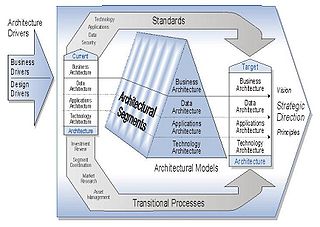Federal Enterprise Architecture Framework (FEA)
What is the Federal Enterprise Architecture Framework (FEA)?
The Federal Enterprise Architecture Framework (FEA)' is a comprehensive framework used by the federal government of the United States to organize its information and resources to align government agencies' missions, programs, and processes with their strategic goals and objectives. It provides a common approach for the integration of strategic, business and technology management as part of organization design and performance improvement.[1] The FEA provides a common language and approach for understanding and analyzing IT investments, improving collaboration and coordination across federal agencies, and enabling the delivery of technology services more efficiently and effectively. It aims to support cost savings, facilitate information sharing, and promote innovation within government operations by standardizing the development and management of federal IT architectures.
The FEA consists of several reference models designed to facilitate cross-agency analysis and the identification of duplicative investments, gaps, and opportunities for collaboration within and across agencies. These reference models include:
- Performance Reference Model (PRM): Helps agencies to measure the performance of IT investments and their impact on strategic outcomes.
- Business Reference Model (BRM): Provides a framework for describing the government's business operations, regardless of the agency performing them.
- Data Reference Model (DRM): Focuses on the standardization of data and information across the government to improve sharing and transparency.
- Application Reference Model (ARM): Describes the standards for applications used by the government to enable efficiency and effectiveness.
- Infrastructure Reference Model (IRM): Defines the standards for technology infrastructure within the government, promoting interoperability and shared services.
- Security Reference Model (SRM): Ensures that security and privacy principles are integrated into all facets of the architecture.
FEA Framework v 1.1 [2]
The FEAF describes eight components of an enterprise architecture:
- Architecture Drivers
- Strategic Direction
- Current Architecture
- Target Architecture
- Transitional Processes
- Architectural Segments
- Architectural Models
- Standards
The FEAF also provides direction for establishing "Federal segments", which are cross-agency business areas (such as international trade, grants, common patient records) that transcend federal agency boundaries. These federal architectural segments collectively constitute the Federal Enterprise Architecture.
The FEAF partitions a given architecture into business, data, applications, and technology architectures, as shown in the following figure. The FEAF currently includes the first three columns of the Zachman Framework and the Spewak Enterprise Architecture Planning (EAP) methodology.

source: CIO Council
FEA Framework v2 [3]
The Federal Enterprise Architecture Framework v2 describes a suite of tools to help government planners implement the Common Approach. At its core is the Consolidated Reference Model (CRM), which equips OMB and Federal agencies with a common language and framework to describe and analyze investments. It consists of a set of interrelated “reference models” that describe the six sub-architecture domains in the framework:
- Strategy
- Business
- Data
- Applications
- Infrastructure
- Security
These are designed to facilitate cross-agency analysis and the identification of duplicative investments, gaps and opportunities for collaboration within and across agencies. Also, by applying all six reference models, agencies can establish a line of sight from the strategic goals at the highest organizational level to the software and hardware infrastructure that enable the achievement of those goals. Collectively, the reference models comprise a framework for describing important elements of federal agency operations in a common and consistent way.
See Also
References
Further Reading
- Basics of the Federal Enterprise Architecture Framework Innovategov.org
- How to survive in the jungle of Enterprise Architecture Frameworks - Federal Enterprise Architecture Framework (FEAF)© PSU.edu
